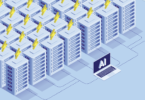What does a June 14 announcement that a UK-based venture firm made a seven figure investment in the IOTA Foundation have to do with your business? The funding enables IOTA to help big corporates use blockchain technology to create new business models and new revenue streams for the financial services, logistics and supply chain, energy, auto and healthcare sectors.
So what is IOTA, a little-known European organization which now has a market cap of $1.5 billion,and how might it help your company?
“ The IOTA Foundation is already working with industry leaders in their respective domains like Bosch, Innogy and Cisco,” says David Sønstebø, one of four IOTA foundation co-founders. “Our goal is to become a neutral entity that cultivates cutting edge innovation in all sectors touched by technology.”
Think of it as “the ledger of things,” the marriage of the Internet of Things (IoT) and blockchain, a distributed ledger technology which promises to be as revolutionary as the Internet itself. IOTA is building a backbone for the so-called IoT, applications that connect to the Internet everything from factory floor machines to home appliances and humans. Blockchain is designed to be a tamper-proof distributed record of transactions that is maintained by a network of computers on the Internet and secured through advanced cryptography. One of its potential uses is to add effective security and better identity management features to IoT applications, which are vulnerable to hacking.
In order for businesses and consumers to safely use the IoT, each device on the network will need to have a secure digital identity. That’s the first challenge. Then, a settlement layer needs to be established in order to enable a new ‘economy of things”, allowing devices, sensors and machines to exchange value in real-time, without automatically incurring fees. And, to be trusted there needs to be an immutable record of the transactions.
The IOTA Foundation aims to meet all of those objectives through its own flavor of blockchain called Tangle and its work with some global consortiums, says Dominik Schiener, another of the IOTA Foundation’s co-founders and a speaker at Viva Technology, a technology conference that took place in Paris June 15–17.
IOTA’s technology is open source and free to use so any one can join the foundation and use the technology to build applications.
“Corporate involvement in the foundation is crucial,” says Schiener, an Italian entrepreneur who has been in the blockchain space for more than five years. “ There are big use cases for this but we don’t know what (corporates) want. So our attitude is ‘let’s do this together’.”
The IOTA Foundation is a member of a consortium called Trusted ID Alliance that also includes Cisco, Bosch, Gemalto and Foxconn. The Trusted ID alliance is working on ways of standardizing how blockchain can be used to secure and improve IoT applications. The IOTA Foundation is also a member of the Decentralized Identity Foundation, a grouping of competitive companies, including Microsoft and Accenture, launched in May, that aims to create a universal, secure, decentralized way for data to be accessed by institutions and individuals to verify identity.
These consortia are among several collaborative efforts aimed at advancing the development of blockchain technology. IBM, for example, has separately teamed with Canada’s SecureKey on the roll-out of a blockchain-based digital identity service.
Together SecureKey and IBM are developing a digital identity and attribute sharing network using IBM’s Blockchain service which is built on top of the Linux Foundation’s open source Hyperledger Fabric v1.0. As a permissioned blockchain, IBM says the Hyperledger Fabric is an essential component in delivering services that comply with regulations where data protection and confidentiality matter.
Six of Canada’s largest banks have invested $27 million CDN in SecureKey as part of an ambitious plan to roll out a national digital identity network in Canada that aims to offer a secure way for consumers to exchange all types of personal data.
When it launched last October it was hailed as the largest privacy- by –design consumer digital identity service initiative to date and the first widespread commercial uses of blockchain distributed ledger technology by financial services institutions.
When fully launched in 2017 the Canadian program will build on top of the secure digital ID that banks have already established nationwide with the help of SecureKey, a start-up specialized in secure identity and authentication founded by serial entrepreneur Greg Wolfond. In addition to blockchain technology SecureKey uses biometrics to ensure the identity of the person logging in.
Under the new program blockchain technology will be used to allow the secure exchange of any type of personal data. The permission-based system would allow, for example, a bank to release all of the digital documents needed for someone to be approved to rent an apartment. Banks would charge a fee to the business requesting the information.
The service aims to make it much easier and safer for consumers to do business online with private and public sector service providers and to conduct peer-to-peer transactions with other individuals.
Canada’s banks are hoping their nation-wide initiative will place them in a pole position in the digital economy.
There is a strong business case for banks to move into digital identity services, according to a World Economic Forum report. Doing so would allow banks to offer extended financial advisory services and behavior-based insurance.
Banks could also offer identity-as-a-service to businesses that can’t or do not wish to store their clients’ personal data. And, they could extend their customer bases to include ID-only clients, offering identity as a separate, fee-based service for individuals who do not otherwise transact with them.
If blockchain works as it claims and no one can cheat and transactions can be carried out automatically with high levels of safety then it could potentially disrupt whole new areas outside of pure finance. Examples include the secure transmission of medical records; helping electric utilities balance demand and supply more efficiently, making better use of intermittent sources of energy such as wind and solar and enabling the trading of energy on micro grids; helping industry keep better track of goods in the supply chain by creating a tamperproof history of how products are manufactured, moved and maintained in complex networks with many stakeholders.
Blockchain “is a key technology for the fourth industrial revolution, transforming machines into independent economic devices that we can trust,” says Carsten Stoecker, a speaker at Viva Technology, a Senior Manager in the Machine Economy Innovation Lighthouse Lead at German utility company Innogy, and a member of the IOTA Foundation.
And, “IOTA is the only technology leveraging blockchain concepts that was natively designed to support the Machine Economy and the Industrial Internet of Things (IoT) applications including but not limited to, smart grids, manufacturing, and healthcare,” says David Cohen, a tech entrepreneur and investor who recently joined IOTA’s board.
“ All of these IoT systems are decentralizing and moving towards edge computing environments where the complex data processing will happen at the edge, requiring a high degree of data integrity and security.”
The IOTA Foundation has put the key building blocks in place to secure data at the edges of the network, allowing for safe, real-time transactions, says co-founder Schiener. And it is helping establish a global standard for secure digital identity services on the blockchain.
It is up to big companies to figure out how to apply the technology to their sectors. Big corporates can pay a fee to become foundation members and the IOTA Foundation will help by co-developing applications to run on top of its technology, he says.
“ At IOTA we truly believe that we can enable the first production-ready applications for distributed ledger technologies,” says Schiener. “Our message to corporates is start now or risk getting left behind.”





